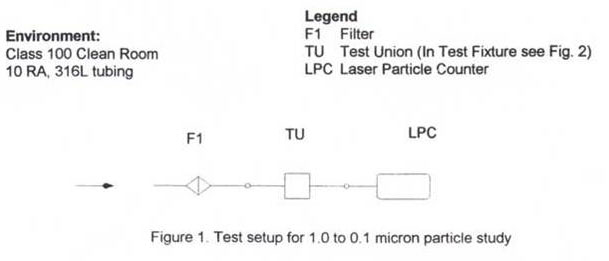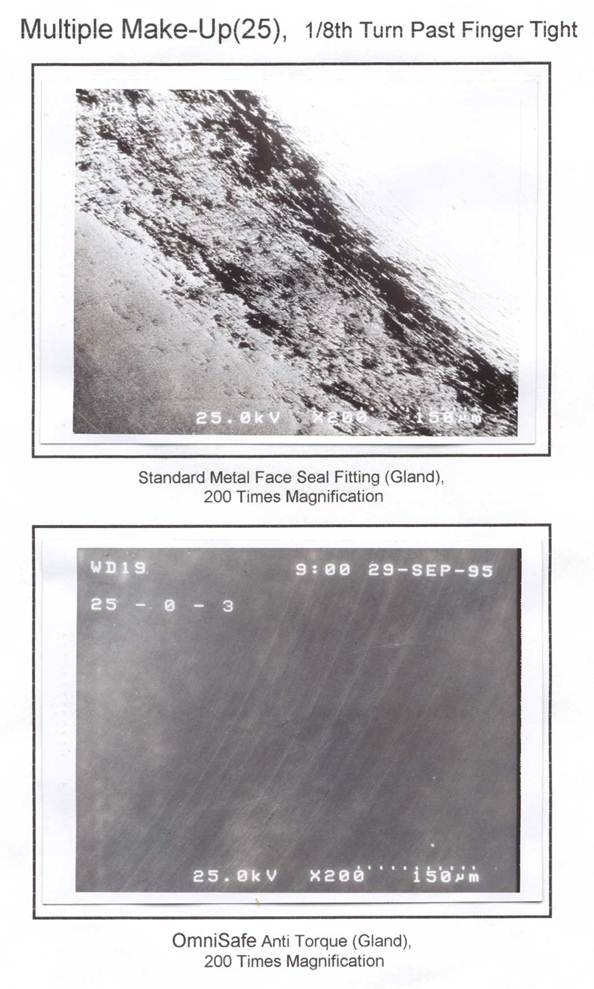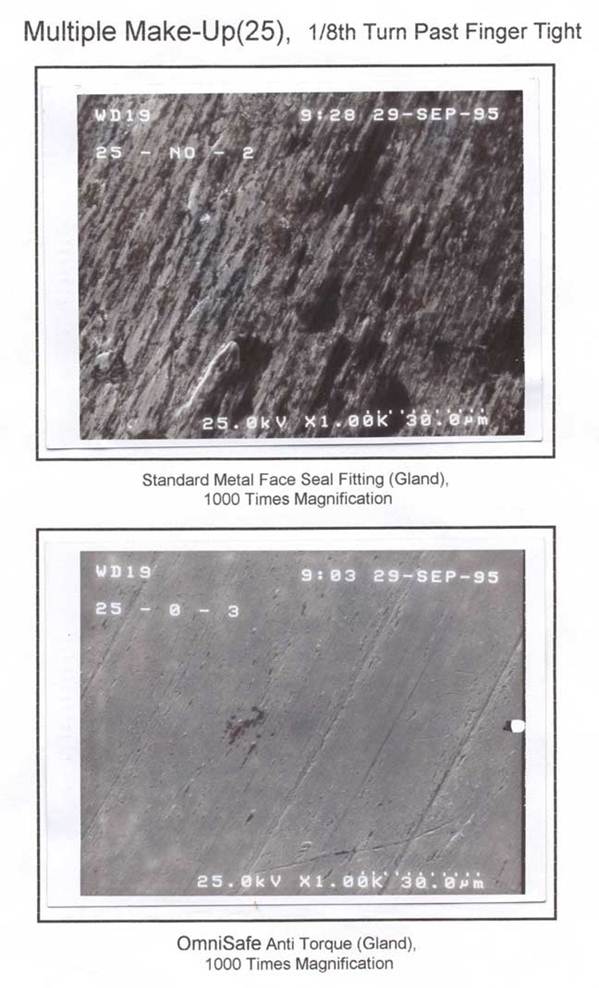OmniSafe Particle Study – Multiple Make Up
This is the equipment and procedure used to determine the quantity and size of the particles shed into the process stream, due to galling, as a legacy metal face seal fitting is tightened.
Objectives
Compare standard metal face seal fitting with the OmniSafe torque suppression fitting over the following criteria:
- Examine the sealing surfaces of glands and gaskets with photomicrographs, for both single and multiple use makeups.
- Use a particle counter to quantify the size and number of particles produced by a single make up.
- Measure the average rotational displacement of components attached by metal face seal fittings with and without torque suppression.
- Observe the behavior of a fitting while an incremental torque is applied to an attached component.
Experiment
Pre-test SEMs – For two of each of the five sample sets pretest SEMs (scanning electron micrographs) were taken. These photomicrographs (of the sealing surfaces of glands and gaskets) were used to establish a virtual base line for evaluating the component’s post test condition.
Particle measurements – This phase of the experiment measured the size and number of particles generated inside the test union as it is made up. The apparatus was set up as shown in Figure 1.
Procedure
- Make up the test union “finger tight” (i.e. maximum manual engagement of male and female nuts)
- Start the test cycle.
- Lightly tap the union until the particle counts measure zero.
- Tighten the test union 1/8 turn.
- Count particles until the reading returns to zero.
No particles are produced by the Omnisafe fitting. Legacy fittings produce particles in the 0.5 – 0.1 micron size range.
[table id=4 /]
[tabs style=”boxed” id=”particle-study-multiple” css=”product-tabber” title=””] [tab title=”30x Magnification”]
After 25 mate/demate cycles the repeated galling of the SS316L gland removes the electro-polished single digit R.a. surface from the crown of the torroid of the legacy metal face seal fitting.
Repeated compressions of the torroid of the Omnisafe fitting do not cause damage to the sealing surface.
[/tab] [tab title=”200x Magnification”]
After 25 mate/demate cycles the repeated galling of the SS316L gland prevented the fitting from passing the 10-9 (atm cc/sec He) leak check spec.
This galling problem is much worse with glands of softer alloys like monel, inconel or nickel.
In later field testing, at Lawrence Livermore National Labs [3], an Omnisafe fitting was still operational and passed leak check after 1557 mate/demate cycles over a 6 year service period.
[/tab] [tab title=”1000x Magnification”]
After 25 mate/demate cycles the repeated galling of the SS316L gland prevented the fitting from passing the 10-9 (atm cc/sec He) leak check spec.
This galling problem is much worse with glands of softer alloys like monel, inconel or nickel.
In later field testing, at Lawrence Livermore National Labs [3], an Omnisafe fitting was still operational and passed leak check after 1557 mate/demate cycles over a 6 year service period.
[/tab] [/tabs]






